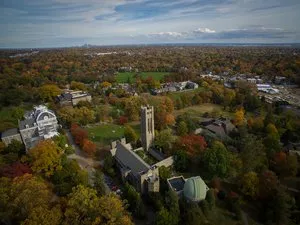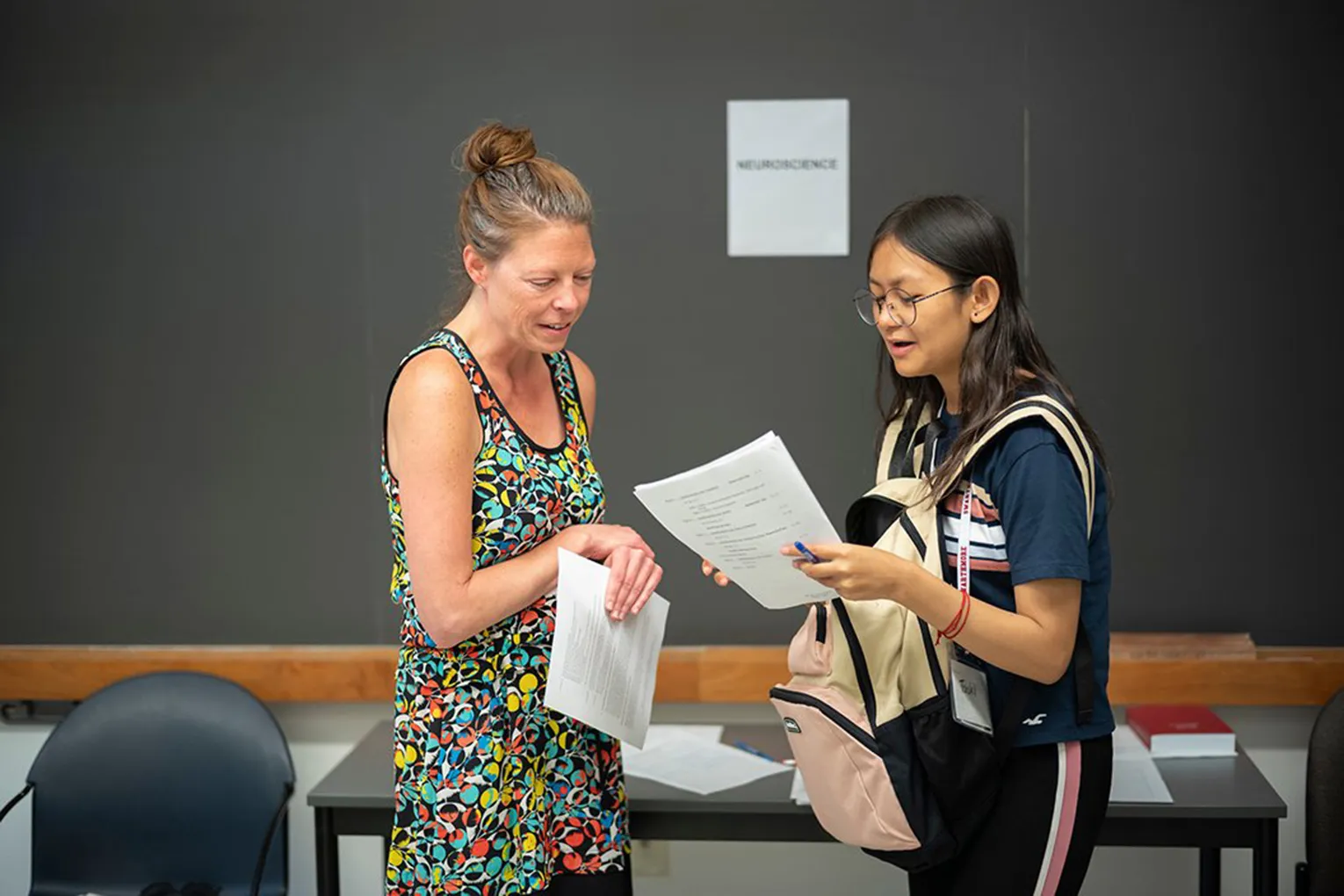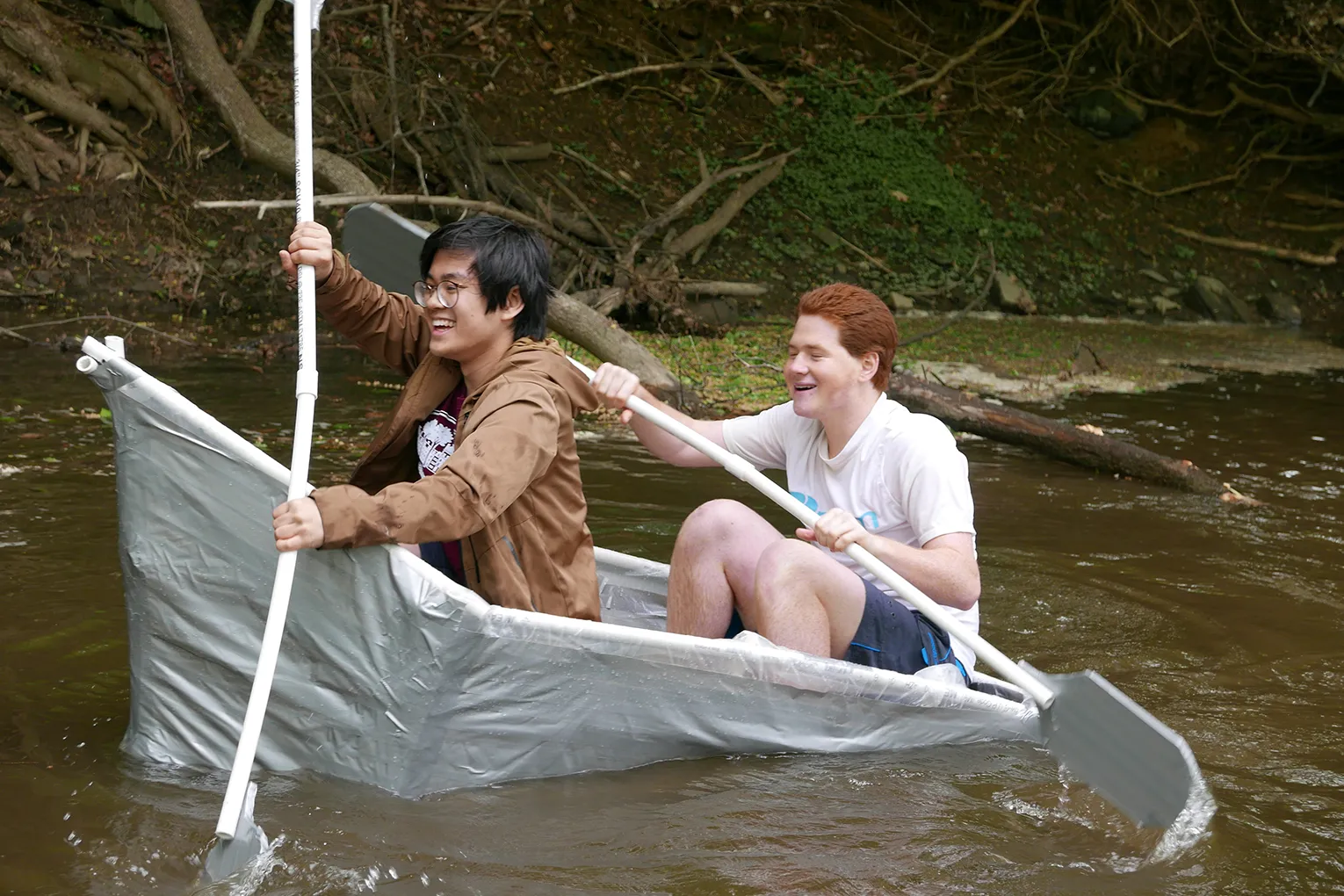Geoexchange System FAQs
The Geoexchange System | The Geoexchange Wells
The Geoexchange System
How does the geoexchange system work?
The geoexchange system will replace Swarthmore’s outdated steam system (which relies on natural gas combustion) to provide efficient renewable-powered heating and cooling to campus buildings.
The geoexchange system works on a yearly cycle. Heat-recovery chillers, powered by renewable electricity, remove heat from campus buildings during the summer and store the heat in the earth. The heat is then extracted and returned to heat the buildings in the winter.
At Swarthmore, this heat will be stored through the use of geoexchange wells, which are essentially deep vertical holes that contain a closed loop pipe system. As liquid travels through the pipes, it is either depositing thermal energy into the earth (summer) or extracting thermal energy from the earth (winter). With the help of the central geoexchange plant, this heated or cooled liquid is then sent to individual buildings across campus, where the HVAC systems transform that thermal energy into heating and cooling for our buildings.
What system is the geoexchange system replacing?
The geoexchange system will replace Swarthmore’s high-pressure steam system, which provides heat to campus buildings. Originally built in 1911, the steam system relies on the combustion of fossil fuels, mostly natural gas, to function. In contrast, the geoexchange system is a highly efficient zero-carbon energy system.
What is the geoexchange plant, and where is it located?
The new Dining and Community Commons (DCC) includes space in the basement for a central geoexchange plant which is the heart of the heating and cooling systems for the entire campus. The plant houses all the large equipment to run the geoexchange system, including pipes, wiring, pumps, tanks, heat-recovery chillers, and a sophisticated control system, though it won’t look like much is happening to the casual observer.
By integrating the plant into the DCC, the College will benefit from its centralized location, its proximity to the geoexchange well site, and the cost-savings compared to constructing a standalone plant. The first phase of the plant was completed in 2024 and it is operational, delivering combustion free heating and cooling to several buildings on campus.
The Geoexchange Wells
What are the geoexchange wells and how do they help us heat and cool the campus?
The wells are essentially underground pipes with liquid running through them. The earth and constant temperature (50 degrees Fahrenheit) act as a thermal storage mass for heat extracted from campus buildings during summer cooling that can then be returned to heat the buildings in the winter. Currently the extracted summer heat is expelled to the atmosphere through evaporative cooling. Transitioning to this method will also save the College millions of gallons of water annually that is currently used for evaporative cooling.
Where will the wells be installed?
All of the wells will be installed underneath Parrish Lawn. Well drilling will occur in phases to meet the geoexchange load as campus buildings are converted to low temperature hot water heating over the 13-year plan implementation. If the College expands its building space in the future and needs to increase heating and cooling capacity, an additional well field zone will be sited underneath the Ben West parking lot.
When will the wells be drilled?
The first phase of drilling, on the field in front of Mertz Hall, was completed in October 2023. The second round of well drilling, on Clothier Lawn and the lawn in front of McCabe, will begin in June 2025, after alumni weekend.
How many wells will there be, and how large?
The wells will be 800 feet deep and approximately 6 inches wide. There may be up to 900 wells across 200,000 square feet.
What is the environmental impact of the well drilling?
As many as six drilling rigs were operated regularly to dig 800-feet deep, 6-inch wide wells under Mertz Lawn. Based on fuel used and hours in operation, the emissions associated with this drilling are estimated to be 940 metric tons of carbon dioxide equivalents — equal to ~18% of the College’s annual emissions from natural gas combustion.
This would be equivalent to the College running the legacy natural gas steam plant for approximately 66 days. This means that the emissions payback (i.e. the amount of time that would offset these added emissions) for this project once the steam plant is shut down is a little over two months. The completion of this wellfield allows the College to transition a portion of campus to geoexchange and reduce natural gas combustion as quickly as possible.



